Diet for Obesity: What to Eat, What to Avoid, and Why
Confused about what to eat? This guide to diet for obesity reveals the best and worst foods—and the science behind them.
Obesity isn’t just about extra weight—it’s a serious health challenge linked to heart disease, diabetes, and even certain cancers.
According to the World Health Organization, more than 1 billion people worldwide are living with obesity, including 650 million adults. The good news? What you eat plays a powerful role in managing it.
In this guide, you’ll learn exactly which foods help fight obesity, which ones make it worse, and why your daily choices matter more than any fad diet.
Let’s make it simple—and yes, even enjoyable—for you to take control of your health.
Why Diet for Obesity Matters
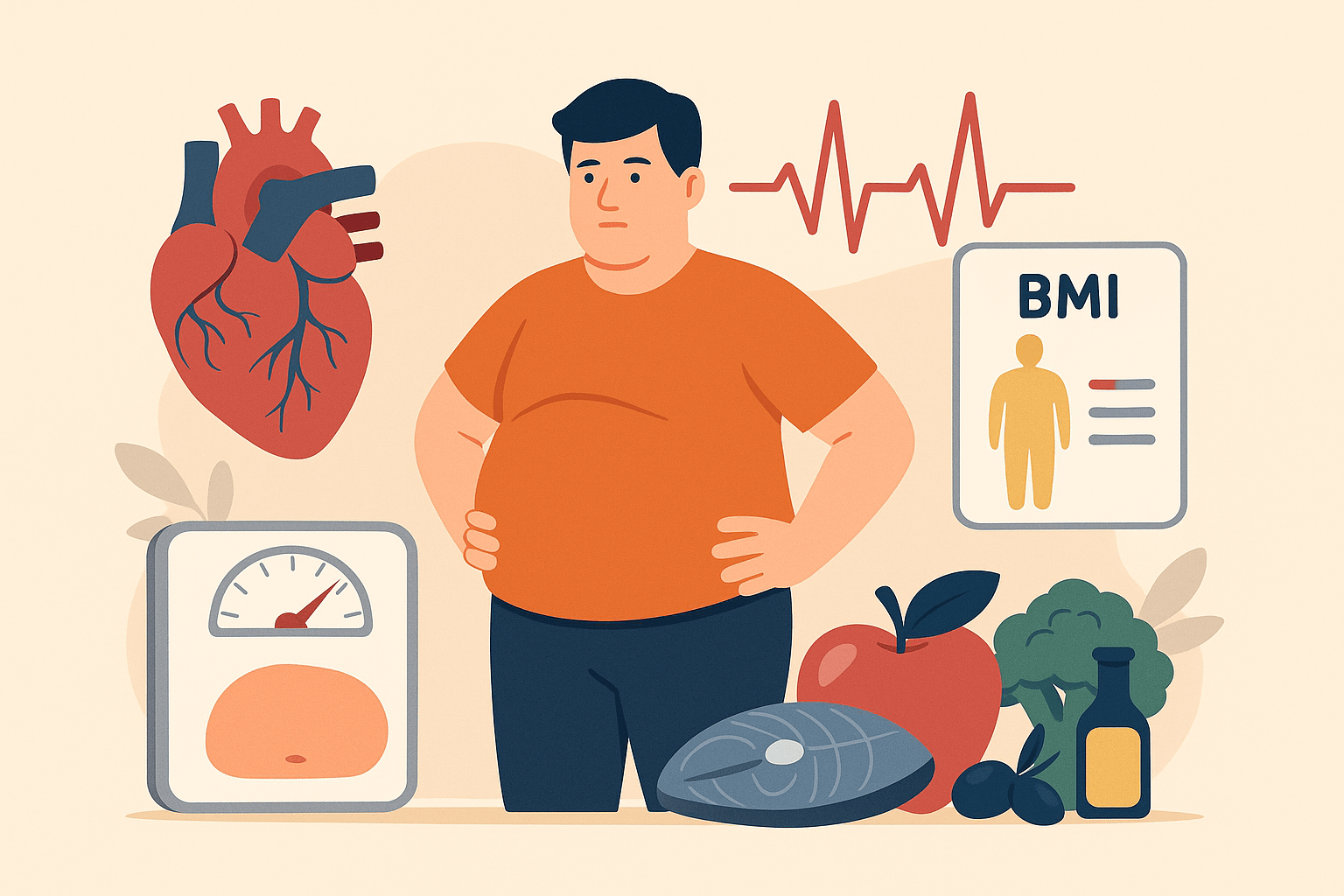
A strong diet for obesity is not a fad—it’s the base for a healthy lifestyle. Food choices decide whether you move toward health or toward risk. Diets full of processed foods, fried foods, and sugary drinks make problems worse.
But eating healthy foods like whole grains, lean meats, fresh fruit, and healthy fats supports losing weight, reduces body fat, and boosts energy.
As Harvard’s Dr. Frank Hu says, “Diet quality, not just calories, strongly impacts long-term health outcomes.”
Obesity and its link to health conditions like high blood pressure, heart disease, and diabetes
Obesity is closely tied to serious health problems. Data from the CDC shows that people with obesity are far more likely to develop high blood pressure, heart disease, and type 2 diabetes. These conditions affect daily life and can shorten lifespan.
Here’s what happens:
-
Extra body fat puts strain on your heart.
-
High calorie intake leads to excess weight and poor body mass index (BMI) scores.
-
Eating an unhealthy diet with too much fat or sugar adds to cardiovascular risk factors.
Balance Bite clients often see progress within weeks. One member shared, “Switching from fried snacks to fresh fruit and whole grains made me feel lighter and more energetic in just a month.” This proves that diet directly influences health outcomes.
Why food choices can make or break a weight loss journey
Your food choices shape your results. A healthy diet improves energy, balances hormones, and reduces cravings. Poor food choices full of saturated fats, trans fats, and unhealthy snacks can block weight loss.
Better choices look like this:
-
Choose healthy meals with vegetables, whole foods, and lean meats.
-
Use healthy fats like olive oil instead of fried options.
-
Pair healthy eating with regular physical activity for faster results.
Obesity is not “just a cosmetic problem.” It affects physical and mental health, increases risk of chronic diseases, and impacts quality of life. A strong obesity diet plan gives you the tools to reach a healthy weight and build long-term healthy habits.
What Makes a Healthy Diet for Managing Obesity?
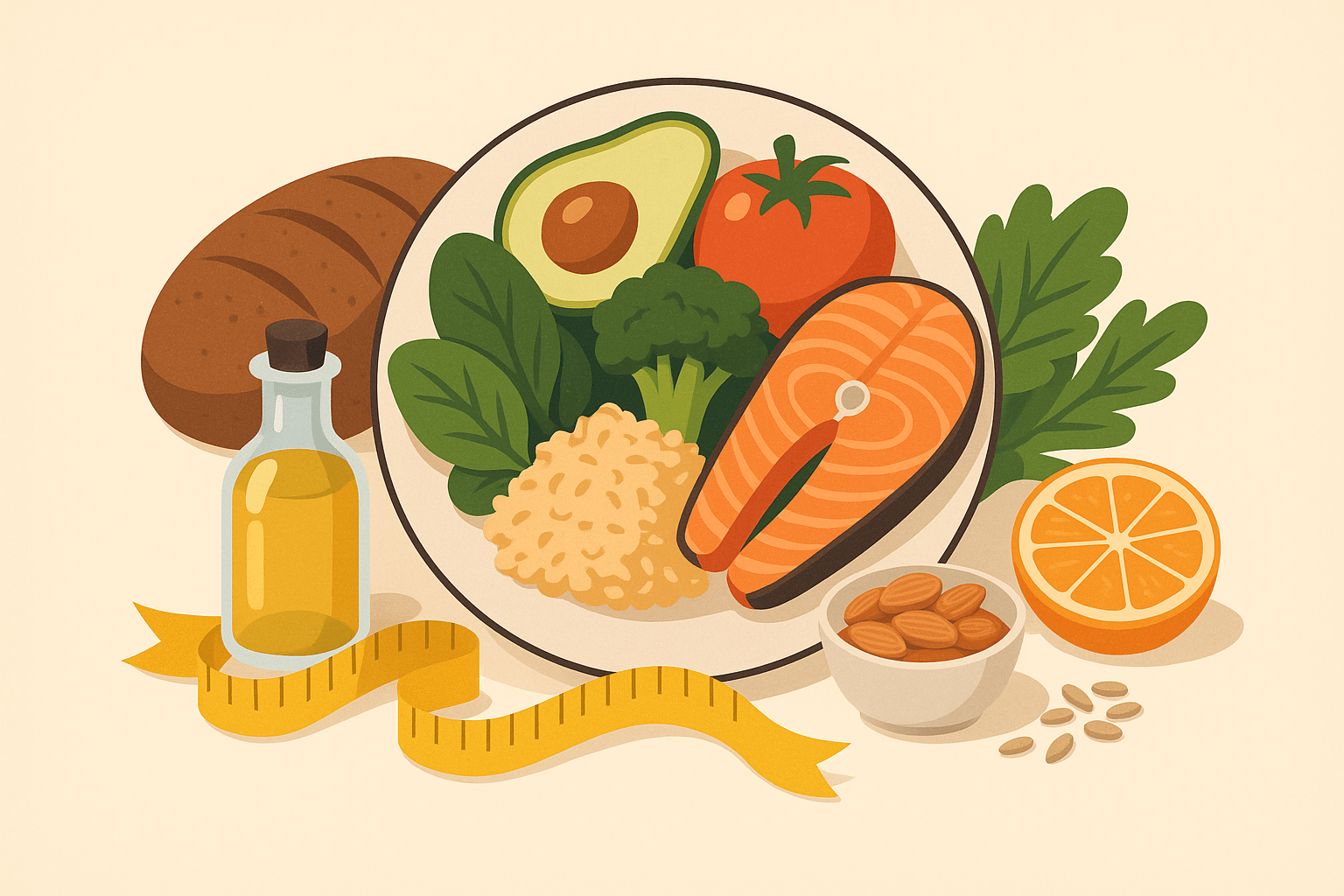
A strong diet for obesity focuses on balance, not quick fixes. You need whole grains, fresh fruit, lean meats, and healthy fats instead of processed foods or fried foods. These changes lower blood pressure, reduce body fat, and support a healthy lifestyle.
According to the CDC, even a 5–10% drop in body weight can cut heart disease risk. In short: better food choices equal better health.
How Body Weight, Body Fat, and Body Mass Index (BMI) Influence Diet Needs
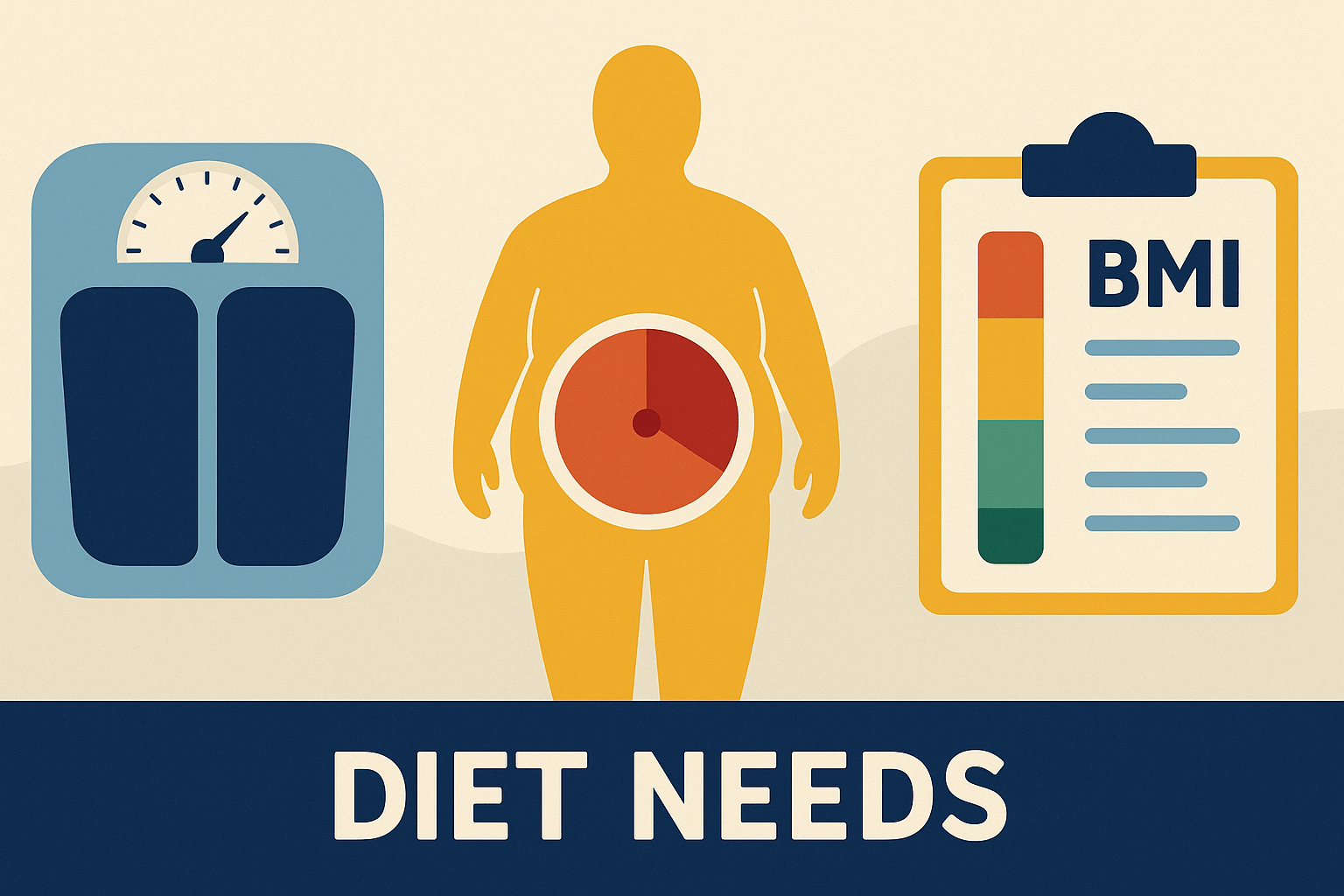
Understanding your body weight, body fat, and body mass index (BMI) is the first step to choosing the right diet for obesity. These three factors show how much fat your body carries and how it affects your health.
The CDC explains that a BMI of 30 or more is considered obesity, but that’s just one piece of the puzzle. Two people can have the same weight but very different levels of body fat—and that changes what kind of diet plan works best.
What Do These Terms Mean?
-
Body Weight: The number on the scale. It shows total mass but doesn’t tell if it’s fat or muscle.
-
Body Fat: The percentage of fat in your body. Too much increases the risk of heart disease, high blood pressure, and chronic diseases.
-
Body Mass Index (BMI): A simple calculation of weight and height. It helps identify excess weight, but it cannot measure fat directly.
How Do They Affect Your Diet?
Your diet needs depend on how these numbers line up. Every person lose weight differently, so the right plan must be personal:
-
If you have high body fat, you need more whole foods, lean meats, and fresh fruit to cut calories without losing nutrients.
-
If your BMI is high, doctors often suggest reducing saturated fats, trans fats, and fried foods while focusing on healthy foods and healthy fats.
-
For people with high body weight, portion control and a structured diet chart are key for losing weight safely.
Why It Matters for Obesity Management
Balance Bite research shows that tailoring a diet plan to body type improves results. One client lowered blood pressure by replacing processed foods with whole grains and healthy meals. In just 10 weeks, they lost 8 kg and felt more energy for physical activity.
Dr. Walter Willett from Harvard puts it simply: “It’s not just about weight—it’s about the type of weight you carry.”
Debunking the Myth: Obesity is not just a Cosmetic Problem
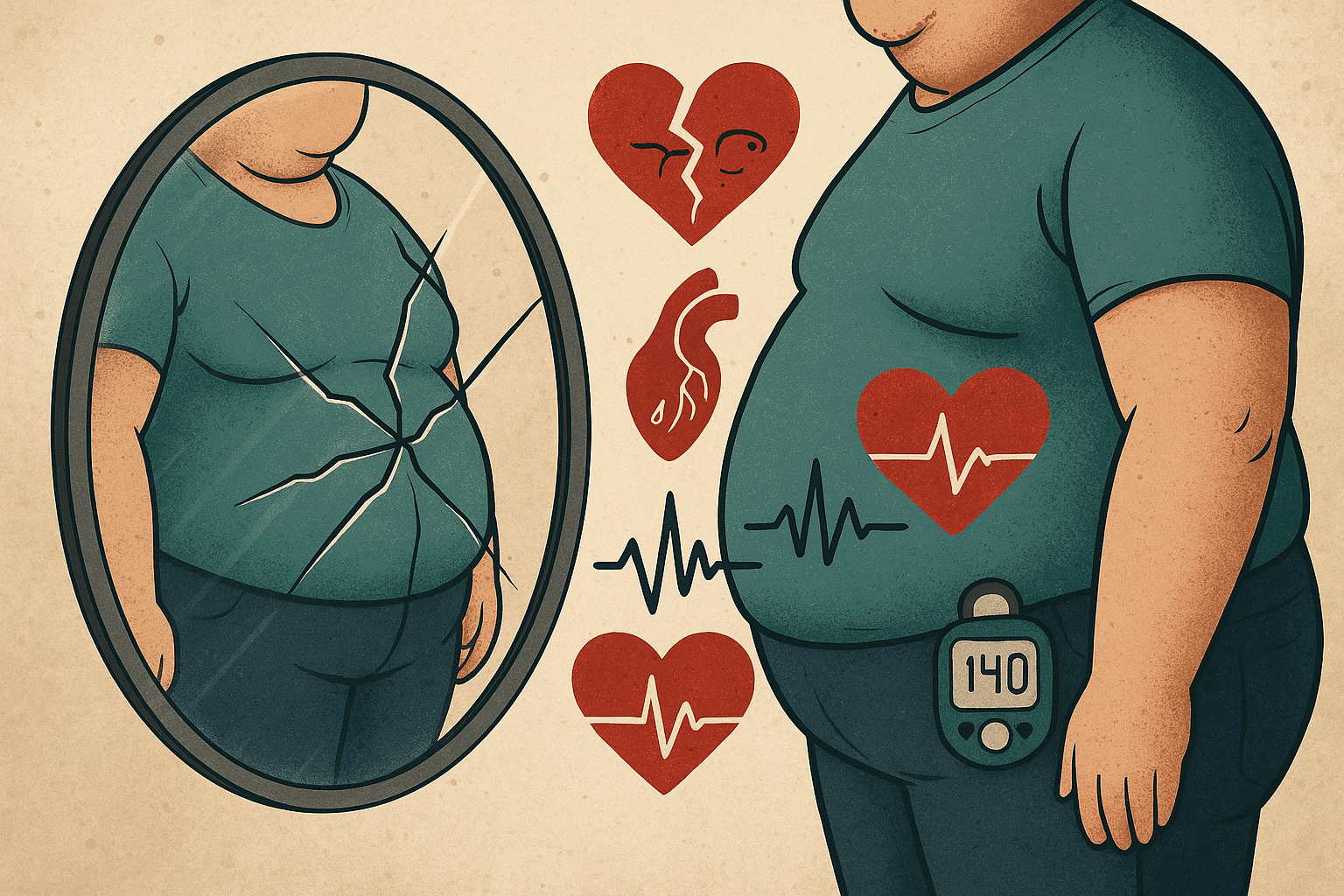
Many people think obesity is about looks, but that’s not true. Obesity increases the risk of heart disease, high blood pressure, chronic diseases, and even some cancers.
A proper diet for obesity helps lower risks and improves physical and mental health. At Balance Bite, clients who switched from processed foods to whole grains and fresh fruit not only lost weight but also gained energy and confidence.
Key Takeaways:
-
Obesity harms health, not just appearance.
-
Better food choices reduce cardiovascular risk factors.
-
A structured diet plan builds a sustainable healthy lifestyle.
Healthy Foods That Support Losing Weight
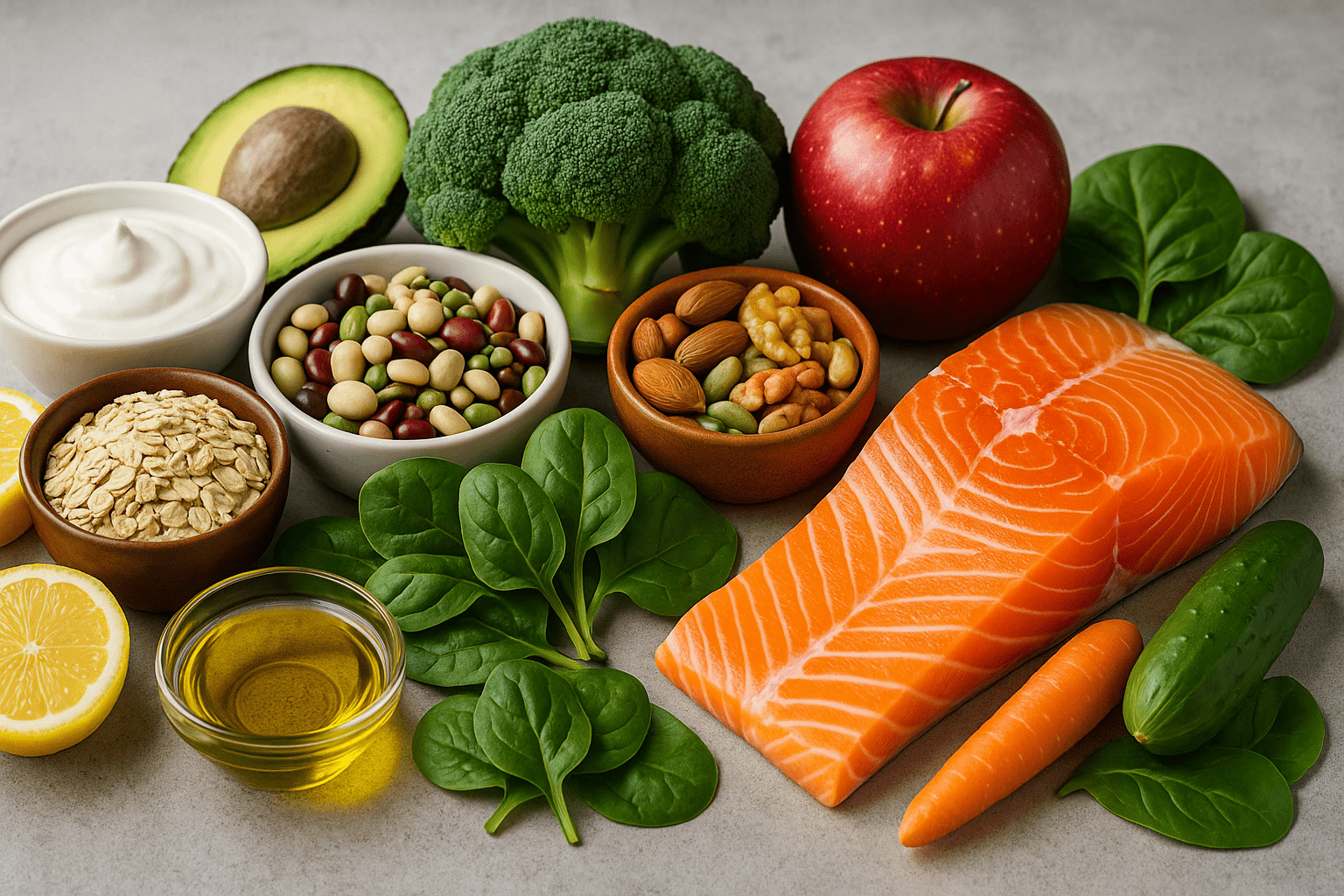
-
Whole Grains: Brown rice, oats, and quinoa are packed with dietary fibre. They keep you full longer and help manage calorie intake. People who eat more whole grains often have lower body fat and better body mass index (BMI).
-
Fresh Fruit and Vegetables: Colorful produce like apples, carrots, and spinach give vitamins and reduce excess weight. A Harvard study showed that eating more fresh fruit daily reduces the risk of chronic diseases by up to 20%.
-
Lean Meats and Plant Proteins: Chicken, fish, beans, and lentils are great for building muscle without adding extra fat. These lean meats and plant proteins keep you strong during your weight loss journey.
-
Healthy Fats: Not all fats are bad. Nuts, seeds, and olive oil are rich in healthy fats that promote brain health and support heart function. Just remember: small portions matter.
-
Low-Fat Dairy: Milk, yogurt, and cheese provide calcium and protein. Choosing low fat dairy helps strengthen bones without adding too many calories.
-
Whole Foods Over Processed Options: Cut down on processed foods and fried foods. Go for whole foods instead—like fresh veggies and homemade meals. These improve digestion and reduce cardiovascular risk factors.
-
High-Fibre Foods: Beans, peas, and whole wheat bread are rich in fibre. They improve gut health, reduce hunger, and support a healthy lifestyle.
How these choices improve physical and mental health and promote a healthy lifestyle
Choosing the right foods in a diet for obesity is not just about losing weight. It also protects your physical and mental health and builds a healthy lifestyle.
The CDC reports that eating more whole grains and fresh fruit reduces the risk of heart disease and high blood pressure. These simple swaps improve energy, mood, and overall health. Whole foods and regular exercise work together in promoting weight loss safely.
Here’s how healthy foods make a difference:
-
Whole foods and lean meats give long-lasting energy and cut down on excess weight.
-
Healthy fats from nuts and olive oil improve brain health and reduce cardiovascular risk factors.
-
Low fat dairy supports strong bones without adding too many calories.
-
High-fibre foods help digestion, keep you full, and support weight loss management.
At Balance Bite, clients who replaced processed foods with natural meals saw better focus, lower blood pressure, and steady progress in their weight loss journey.
As Dr. Dariush Mozaffarian of Tufts University explains, “Better diet quality leads to better long-term health, regardless of weight.”
Foods to Avoid in a Diet for Obesity
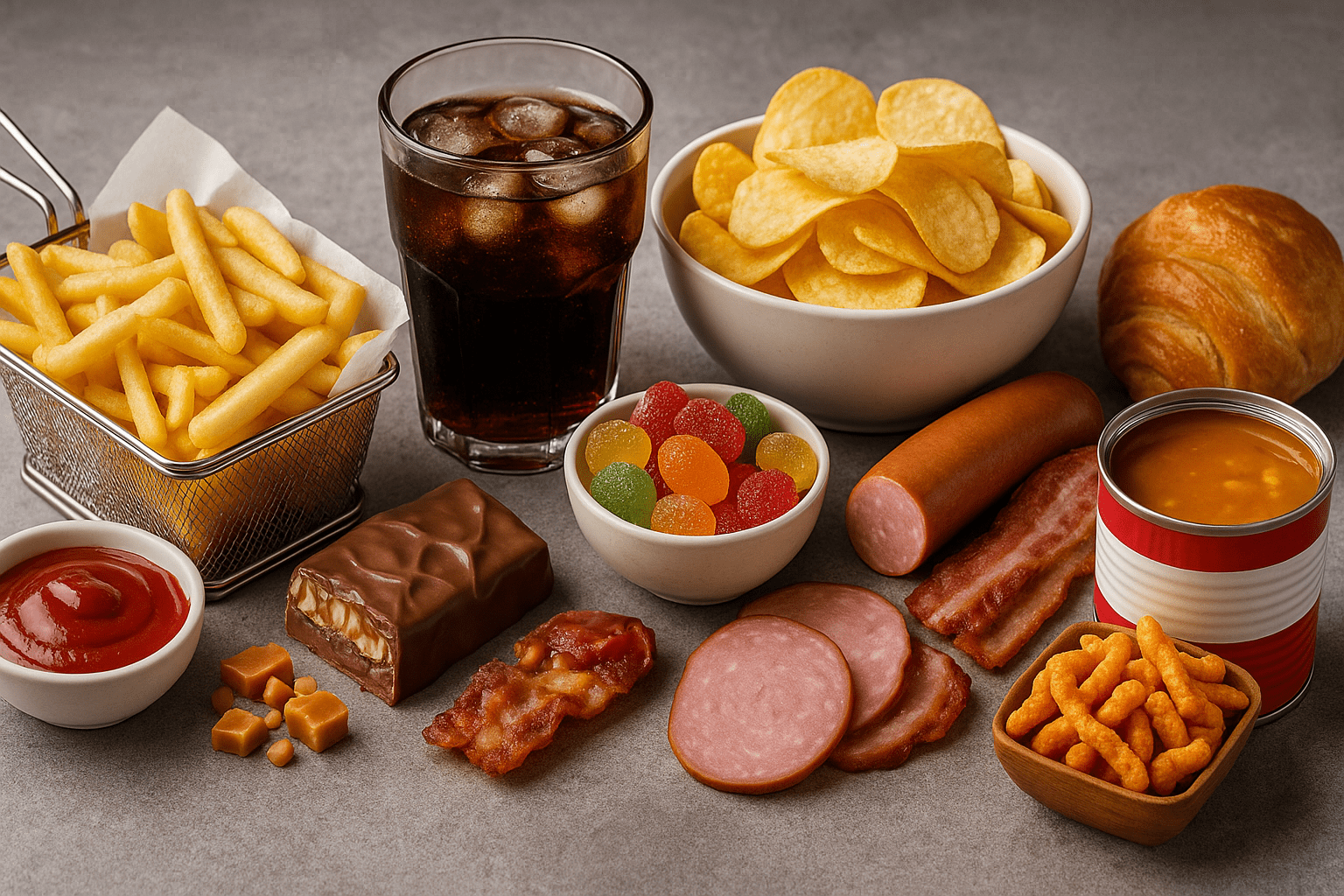
-
Processed Foods: Packaged chips, cookies, and instant noodles are full of hidden sugar, salt, and preservatives. The food industry often promotes processed snacks and sugary drinks, which contribute to obesity. They increase excess weight and harm long-term health.
-
Fried Foods: French fries and deep-fried snacks contain too much oil. These foods add saturated fats and raise cholesterol, making weight loss harder.
-
Sugary Drinks & Fruit Juices: Soda, flavored drinks, and even packaged fruit juices have lots of sugar. They give quick calories but no nutrition, raising risks of high blood pressure and diabetes.
-
Processed Meats: Hot dogs, sausages, and bacon are high in sodium and unhealthy fats. Studies show regular intake raises cardiovascular risk factors and cancer risk.
-
Foods High in Saturated Fats & Trans Fats: Eating too much sugar and unhealthy fats leads to fat storage in the body, making weight loss harder. Pastries, cakes, and fried fast food are loaded with trans fats. These clog arteries and increase the risk of heart disease.
-
Unhealthy Snacks: Candy bars, salty chips, and packaged desserts slow down your weight loss journey. They give empty calories and make cravings worse.
-
Excess Salt and High-Sodium Foods: Too much salt from soups, sauces, or canned food can raise blood pressure quickly. The American Heart Association suggests less than 2,300 mg of sodium daily for adults.
Choosing the Right Diet Plan for Obesity
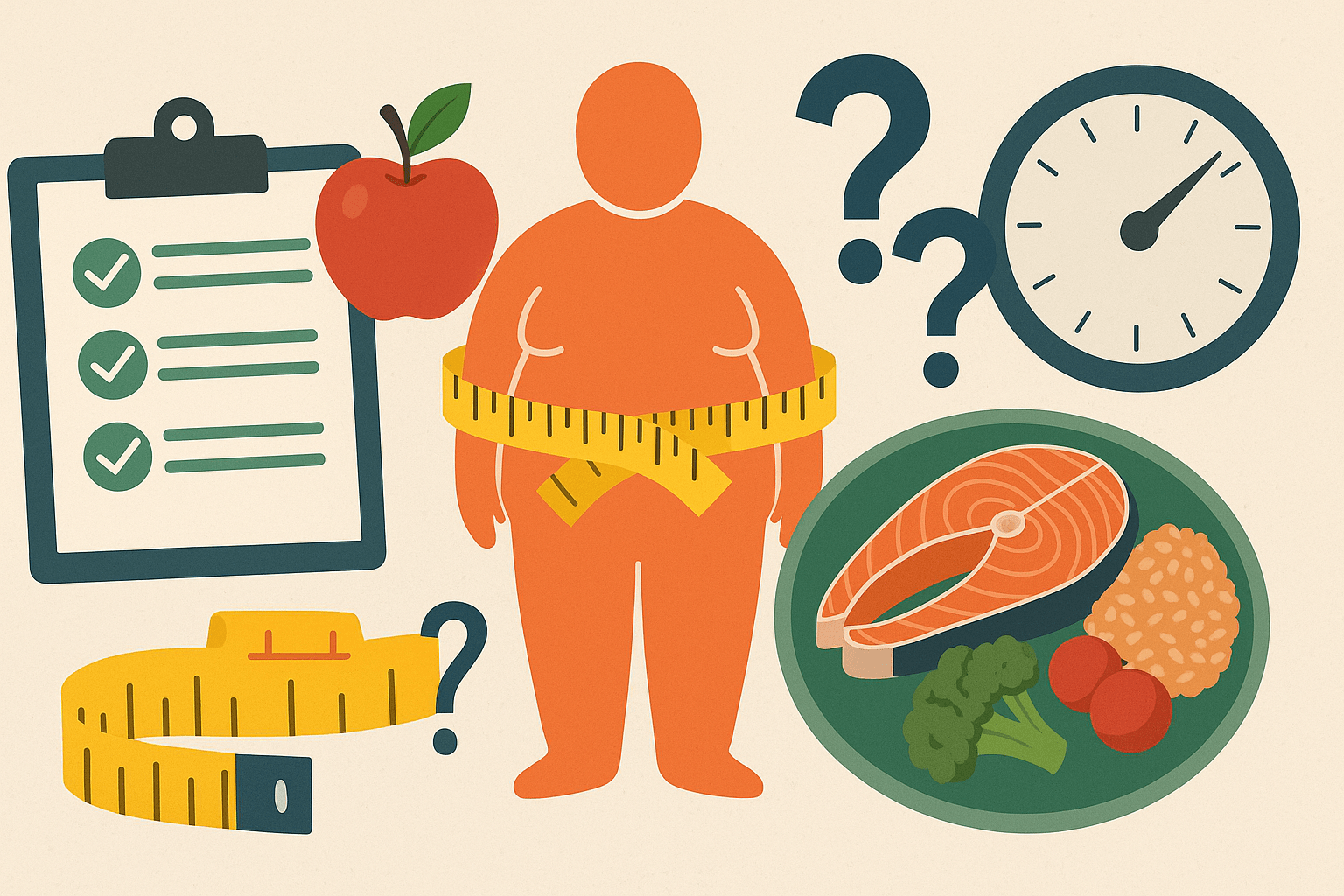
Step 1: Understand Your Health Needs
Before starting, ask: what is my current body weight, body mass index (BMI), and do I have high blood pressure or other health conditions?
-
If you have heart disease risk, cutting saturated fats and processed foods should be the first step.
-
If your doctor warns about blood pressure, avoid fried foods and excess salt.
-
If childhood obesity runs in your family, focus on healthy foods like whole grains and fresh fruit.
Balance Bite clients often begin with a simple diet chart. By tracking food groups, they see which items support a healthy lifestyle and which add excess weight.
Step 2: Set Clear and Realistic Goals
Crash diets rarely work. You don’t need a strict diet; you need small, consistent steps.
-
Start with a meal plan that swaps sugary drinks for water.
-
Add physical activity daily, even a 20-minute walk.
-
Aim for gradual weight loss (1–2 pounds per week), which is safe and sustainable.
-
Simple swaps like replacing sugary drinks with water help you start losing weight quickly.
Research from Harvard shows that people who follow realistic goals are 2x more likely to maintain a healthy weight long term.
Step 3: Choose the Right Approach
Not every diet plan works for everyone. Some people do well with a low fat diet, while others prefer a low carbohydrate diet. What matters most is choosing an approach that you can stick to for the long term. Crash diets may look tempting, but they often lead to quick weight gain later.
-
If you want steady progress, go for a balanced healthy diet. Include whole grains, fresh fruit, and lean meats.
-
If you have high blood pressure or heart disease risk, avoid foods high in saturated fats and trans fats.
-
People with childhood obesity or family history of obesity diet plan challenges often benefit from simple changes like skipping sugary drinks and replacing them with water.
-
A structured weight loss program gives guidance, accountability, and steady results.”
Balance Bite clients who chose a realistic plan lost more body fat and felt more energy without feeling deprived. As Harvard Health explains, “The best diet is the one that is balanced, enjoyable, and sustainable.”
Step 4: Prioritize Whole and Nutritious Foods
A successful diet for obesity isn’t only about what you cut—it’s about what you add. Whole foods are packed with nutrients and support both physical and mental health.
-
Replace processed foods with natural options like vegetables, healthy meals, and whole foods.
-
Choose healthy fats from nuts and olive oil instead of fried snacks.
-
Add more dietary fibre to improve digestion and control hunger.
-
Use an easy diet chart to track your meals and stay consistent.
Studies show that people who eat more whole grains and fresh fruit reduce cardiovascular risk factors and maintain a healthy weight more effectively.
Step 5: Create a Balanced Diet Chart
A diet for obesity should not be random. You need a clear diet chart to keep meals simple and structured. A good chart includes all food groups in the right balance.
-
Add whole grains like oats or brown rice for energy.
-
Include healthy foods such as vegetables, fresh fruit, and lean meats.
-
Limit processed foods, fried foods, and items with saturated fats or trans fats.
-
Drink more water instead of sugary drinks or packaged fruit juices.
Research from the National Institutes of Health (NIH) shows that a balanced diet with high dietary fibre helps lower blood pressure and supports a healthy lifestyle.
Step 6: Monitor Your Progress
Making a plan is only the start. To see results, you need to track your progress.
-
Check your body weight and body mass index (BMI) weekly.
-
Record your meals and note if you eat too many unhealthy snacks or miss healthy meals.
-
Watch changes in your blood pressure or heart disease risk factors.
Set small milestones. For example, aim for steady weight loss instead of quick fixes. If you slip, don’t give up—adjust your diet plan and keep moving.
Step 7: Combine Healthy eating with Lifestyle Habits
A diet for obesity works best when paired with daily habits that support health. Food alone is not enough—you also need balance in your lifestyle.
What to do:
-
Add physical activity like walking, yoga, or light exercise. Studies show even 30 minutes a day improves body weight and lowers high blood pressure.
-
Get 7–8 hours of sleep. Poor sleep is linked to excess weight and higher risk of heart disease.
-
Reduce stress through meditation or hobbies. Stress can trigger cravings for unhealthy snacks and processed foods.
-
Stay hydrated and avoid sugary drinks.
Case Study: From Obesity Struggles to Healthy Weight with Balance Bite
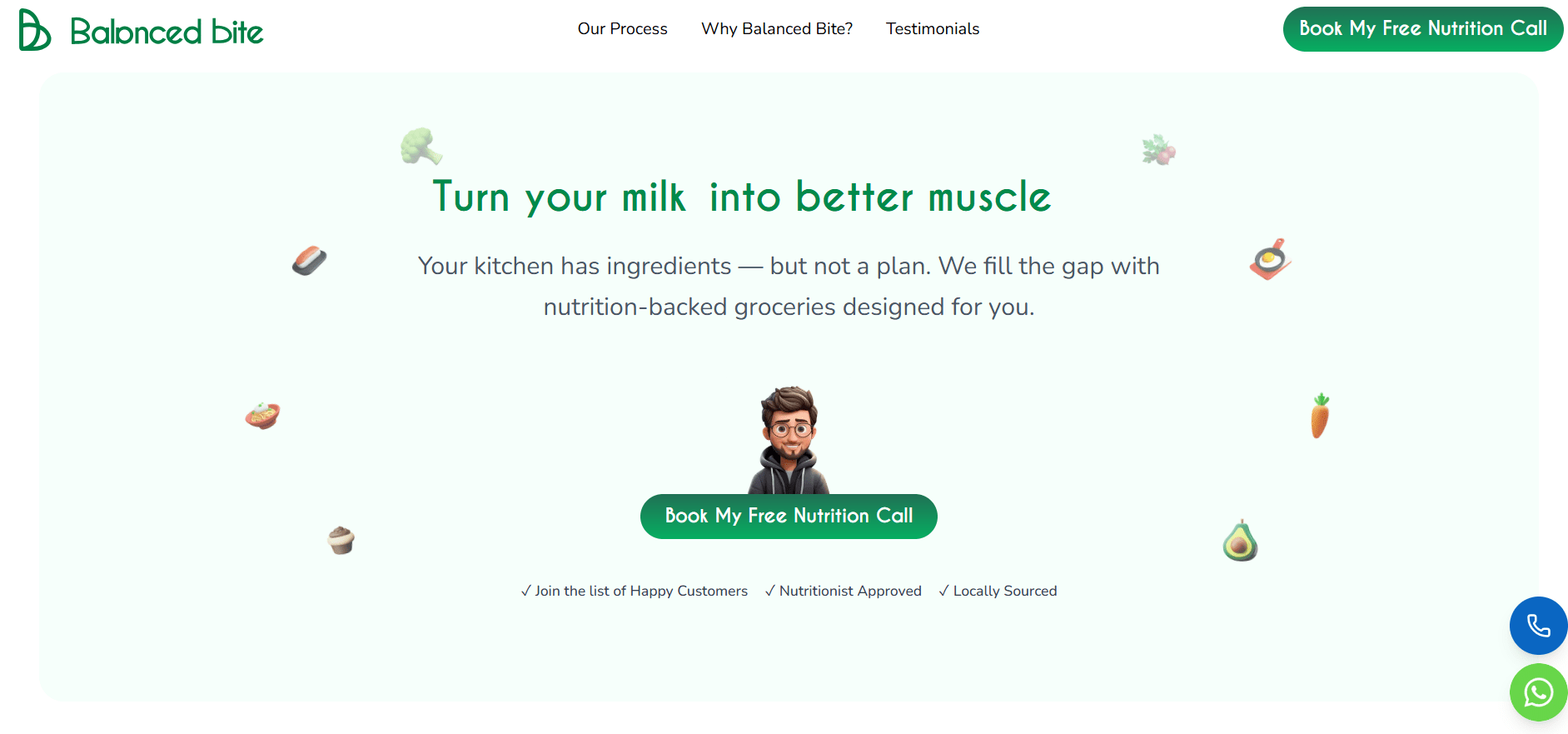
Challenge: A 36-year-old working professional struggled with obesity, high blood pressure, and low energy due to a sedentary lifestyle. After years of fad diets, she found herself stuck—her body weight kept increasing, and her doctor warned of rising cardiovascular risk factors.
Strategy & Execution:
-
Personalized diet plan with whole grains, fresh fruit, and lean proteins.
-
Replaced processed foods and sugary drinks with whole foods and high-fibre snacks.
-
Integrated a simple meal plan that fit her daily schedule.
-
Added light physical activity and weekly tracking for accountability.
Tools/Methods: Using Balance Bite’s structured obesity diet plan, she learned portion control, how to build healthy meals, and small healthy habits that supported long-term success.
Outcome: In just 12 weeks, she lost 9 kg, reduced blood pressure by 12 points, and felt more energetic. Most importantly, she built a sustainable healthy lifestyle.Balance Bite proved that a tailored diet for obesity delivers lasting results without strict restrictions.
Comparing Popular Approaches: Low-Fat Diet, Low-Carbohydrate Diet, Vegetarian Diet, Vegan Diet, and Mediterranean Diet
| Diet Type | Core Idea | Benefits for Obesity | Drawbacks | Best Suited For |
|---|---|---|---|---|
| Low-Fat Diet | Limits fat intake (especially saturated fats) to reduce calories. | Supports weight loss, lowers blood pressure and risk of heart disease. | May lead to higher carb intake; risk of nutrient gaps if fats are too restricted. | People with cardiovascular risk factors or high cholesterol. |
| Low-Carbohydrate Diet | Cuts carbs, emphasizes protein and fat for energy. | Quick body weight reduction; lowers blood sugar and improves metabolic risk factors. | Hard to sustain long-term; may reduce whole grains and dietary fibre. | Those needing fast results or managing diabetes/insulin resistance. |
| Vegetarian Diet | Focuses on plant-based foods, allows dairy and eggs. | Rich in whole foods and fresh fruit; helps reduce body fat and improve healthy lifestyle. | Risk of protein deficiency if not balanced; over-reliance on refined carbs possible. | People aiming for weight loss while still including dairy/eggs. |
| Vegan Diet | Fully plant-based, excludes all animal products. | High in fibre, low in calories; supports healthy gut bacteria and weight loss journey. | Risk of missing B12, iron, protein unless supplemented. | People motivated by health and ethical reasons; strong commitment needed. |
| Mediterranean Diet | Emphasizes whole grains, healthy fats (olive oil, nuts), fish, and vegetables. | Balanced, sustainable, lowers cardiovascular disease risk; great for long-term weight loss management. | Slower initial results; may require costlier foods like fish, olive oil, nuts. | Ideal for overall health benefits and sustainable diet plan. |
Special Diet Plans for Different Needs
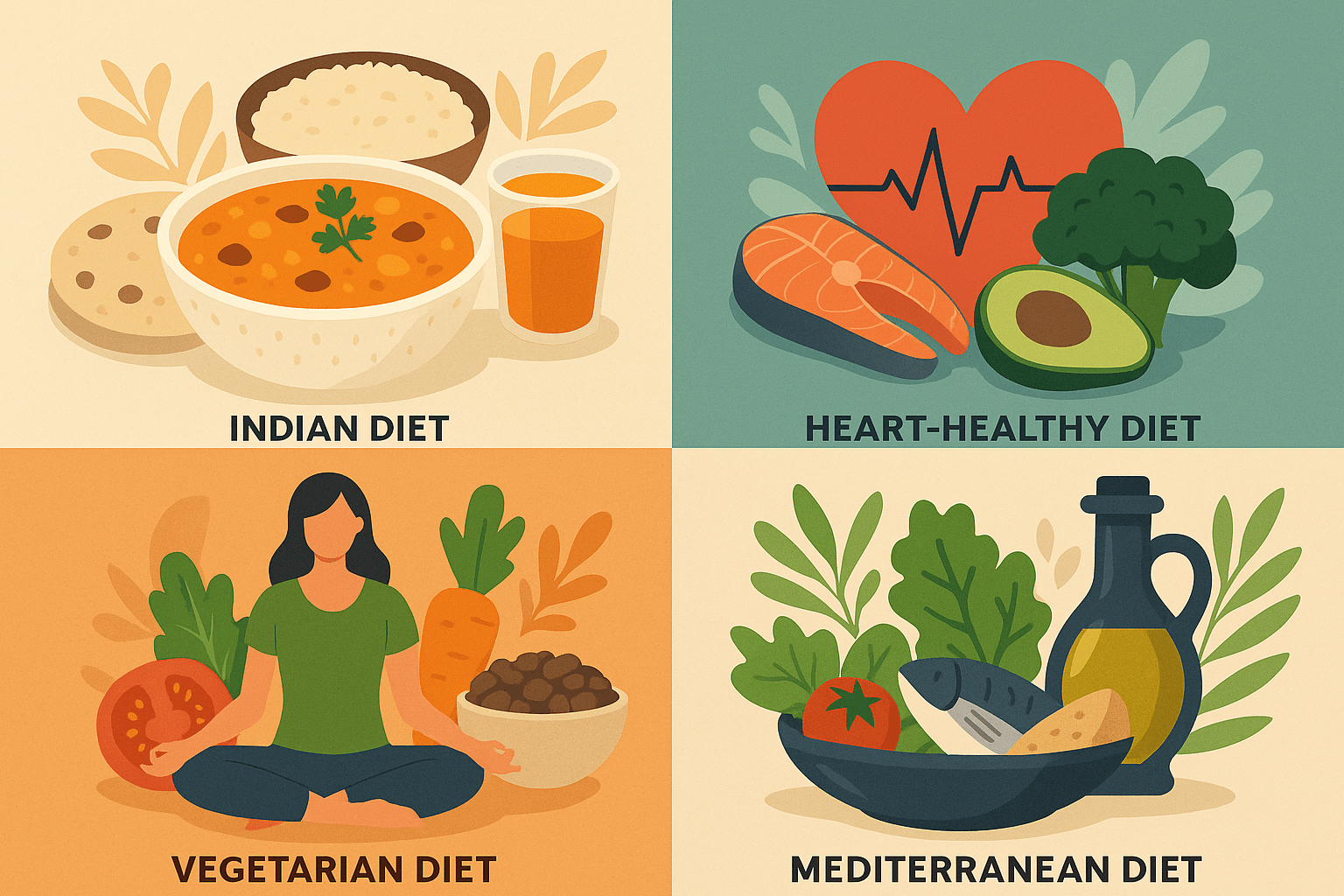
Indian diet options for obesity control
India has many food choices that can make a diet for obesity simple and healthy. You don’t need fancy items—just smart swaps.
-
Start the Day with a Light, Fibre-Rich Breakfast: India has many food choices that can make a diet for obesity simple and healthy. You don’t need fancy items—just smart swaps.
-
Choose Whole Grains Over Refined Ones: Pick whole grains like bajra, ragi, or wheat instead of white rice and maida. They help manage body weight and reduce excess weight.
-
Load Up on Vegetables and Fresh Fruit: Fill half your plate with colorful veggies and add at least one serving of fresh fruit daily. This supports healthy eating and lowers the risk of heart disease.
-
Add Lean Protein Sources: Include lean meats like chicken or fish in small portions. For vegetarians, dal, sprouts, and paneer are great. Protein builds muscles and reduces body fat.
-
Cook with Healthy Fats: Use small amounts of mustard oil, olive oil, or ghee. These healthy fats are better than saturated fats and trans fats from processed snacks.
-
Avoid Deep-Fried and Processed Foods: Cut down on fried foods like pakoras or samosas. Say no to processed foods loaded with salt and unhealthy snacks that add to high blood pressure.
-
Smart Snacking the Indian Way: Choose roasted chana, makhana, or nuts instead of chips or biscuits. This makes snacking healthier and supports your weight loss journey.
-
Stay Hydrated with Healthy Drinks: Drink water, coconut water, or herbal teas. Avoid sugary drinks and bottled fruit juices, which increase calorie intake.
Heart healthy diet for reducing blood pressure and cardiovascular disease prevention
-
Prioritize Whole Grains: Switch to whole grains like brown rice, oats, and barley. These support a healthy lifestyle and lower cholesterol. The American Heart Association reports that eating three servings of whole grains daily can cut the risk of heart disease by 22%.
-
Add More Fresh Fruit and Vegetables: Eating plenty of fresh fruit and vegetables gives you vitamins and dietary fibre. These improve digestion, help in losing weight, and reduce excess weight that raises blood pressure.
-
Choose Lean Proteins: Pick lean meats like chicken or fish. Plant proteins such as beans or lentils also work well. These reduce body fat without adding extra saturated fats.
-
Limit Saturated and Trans Fats: Cut back on fried and processed foods high in saturated fats and trans fats. These fats increase cholesterol and put stress on the heart.
-
Use Healthy Fats in Cooking: Use healthy fats like olive oil instead of butter. This small change supports a heart healthy diet and promotes health benefits without adding harmful fat.
-
Cut Down on Salt: Too much salt raises blood pressure. Reduce packaged snacks and canned foods. Instead, flavor meals with herbs, garlic, or lemon.
-
Stay Hydrated with Heart-Friendly Drinks: Replace sugary drinks and sodas with water, green tea, or fresh lime water. These keep you hydrated and reduce risks of chronic diseases.
Adapting diet for childhood obesity
-
Focus on Balanced, Kid-Friendly Meals: A healthy diet for kids with obesity should be balanced and simple. Use food groups like whole grains, lean meats, vegetables, and fresh fruit. This builds a healthy weight over time and reduces excess weight gain.
-
Cut Back on Sugary and Processed Foods: Processed foods and sugary drinks make children gain body fat quickly. Limiting them is key in any diet for obesity. A study in India showed kids who reduced packaged snacks lowered their body mass index in just three months.
-
Portion Control Made Simple: Children often eat more than they need. Teach portion control by using small plates. Balance one-fourth grains, one-fourth protein, and half vegetables and fruit. This helps in losing weight without a strict diet.
-
Include Family Meals: Family meals encourage healthy eating habits. When everyone follows a healthy lifestyle, kids learn faster. Parents can set examples by avoiding fried foods and high saturated fats.
-
Stay Active Beyond the Plate: Diet for obesity is not enough. Physical activity like cycling, sports, or even walking 30 minutes daily lowers heart disease risk and improves physical and mental health. The American Academy of Pediatrics recommends at least 60 minutes of active play every day.
-
Avoid Strict Diets: Children should not be forced into a strict diet. Instead, focus on healthy foods and slow, steady weight loss. Balance Bite’s programs, for example, teach families to swap unhealthy snacks with whole foods and brown rice meals that kids enjoy.
Beyond Diet: Lifestyle Habits That Boost Results
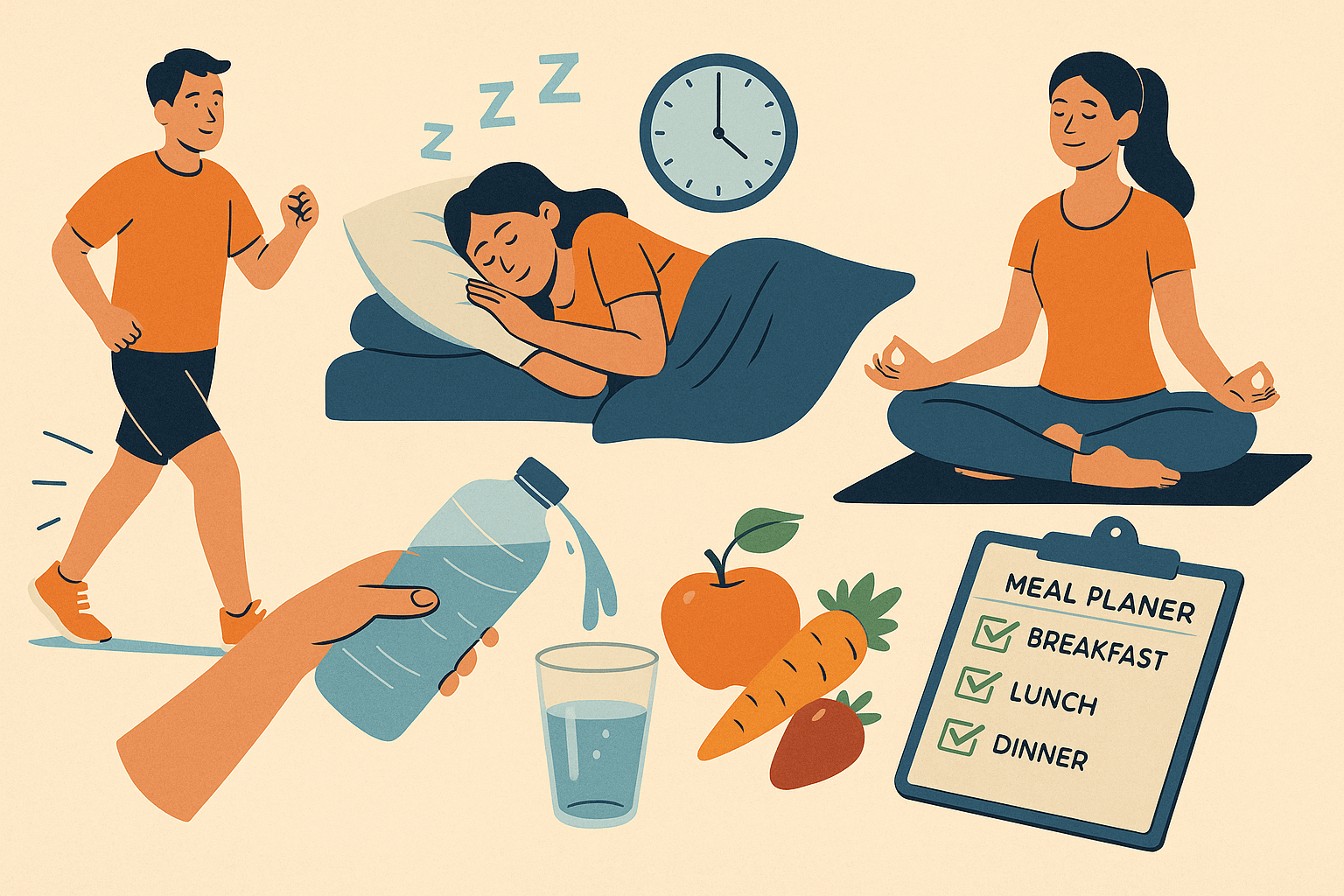
1. Stay Active Every Day
Regular physical activity helps burn calories and reduce body fat. It also lowers the risk of heart disease and high blood pressure.
How: You don’t need the gym every day. Simple steps help:
-
Walk for 30 minutes after meals.
-
Take stairs instead of elevators.
-
Stretch if you sit too long.
A study in India showed that people walking 7,000 steps daily had 30% lower risk of excess weight gain.
2. Prioritize Sleep for Better Weight Control
Lack of sleep affects body weight and appetite. Poor rest raises hunger hormones, making you crave unhealthy snacks and processed foods.
How:
-
Aim for 7–8 hours of sleep.
-
Keep gadgets away at night.
-
Stick to a routine bedtime.
As Balance Bite coaches say: “Better sleep is like free medicine for your weight loss journey.”
3. Manage Stress Wisely
Stress can trigger overeating, especially of fried foods or sugary drinks. It also impacts physical and mental health.
How:
-
Practice breathing exercises for 5 minutes.
-
Try yoga or meditation.
-
Replace emotional eating with a short walk or fresh fruit snack.
Pro tip: A calm mind supports a healthy lifestyle and makes your diet plan easier to follow.
4. Stay Hydrated the Smart Way
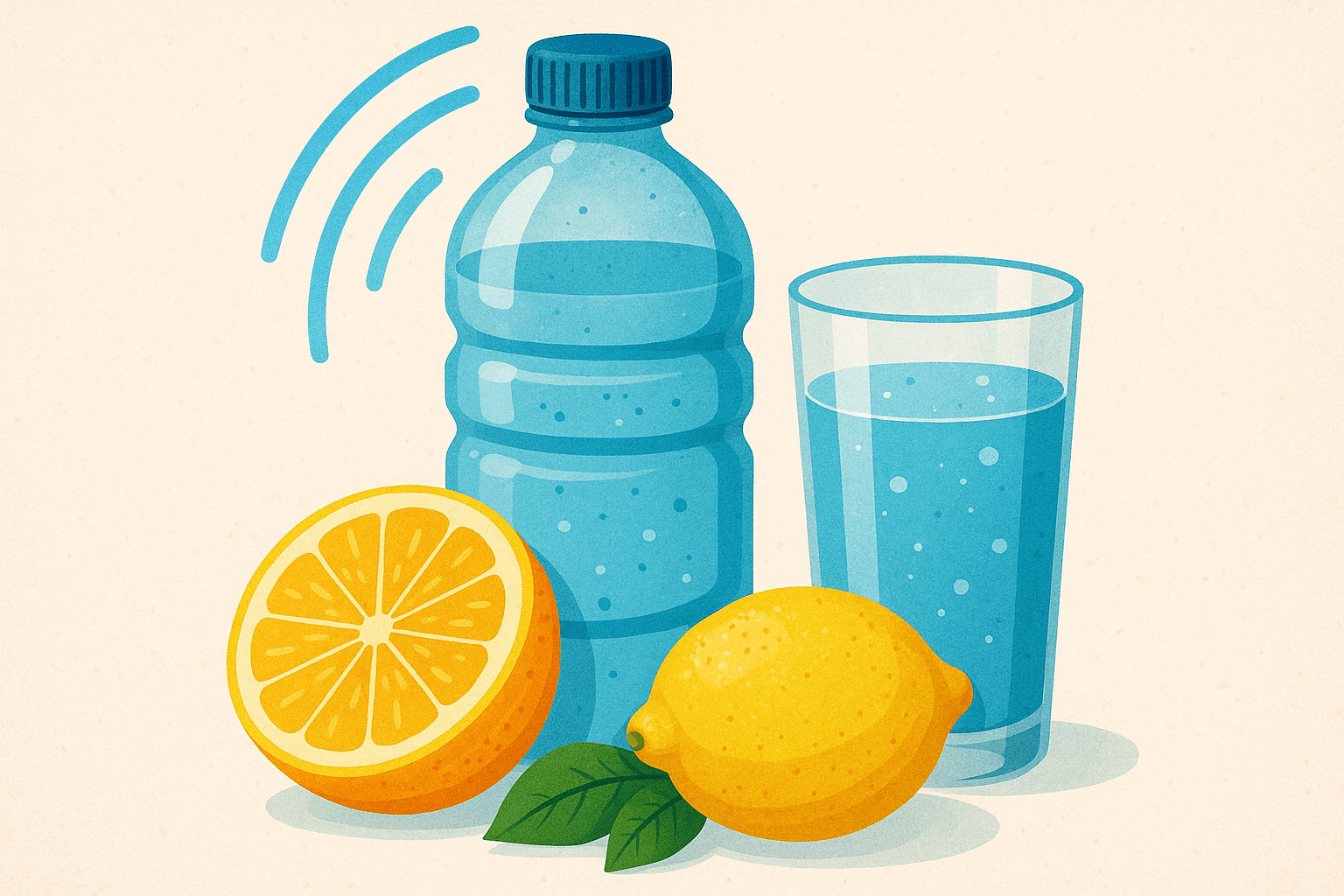
Drinking enough water helps your body burn calories and control hunger.
How: Replace sugary drinks and sodas with plain water, lemon water, or unsweetened herbal tea. Research shows people who drink water before meals may lose more weight. It is often recommended to carry a bottle to remind yourself to sip throughout the day.
Tips:
-
Aim for 6–8 glasses daily.
-
Limit fruit juices, as many are high in sugar.
-
Water also supports a healthy lifestyle by improving energy levels.
5. Build Healthy Habits Slowly to Sustain Healthy Weight
Quick fixes and a strict diet are hard to maintain. Building small, steady habits is better.
How: Start with easy steps—eat more whole grains, add fresh fruit to snacks, or plan one healthy meal each day. Over time, these habits become natural.
Tips:
-
Track your calorie intake with simple apps.
-
Focus on healthy foods instead of focusing only on restrictions.
-
Include family or friends to make lifestyle changes more fun.
As one Balance Bite nutritionist puts it, “Healthy weight loss is not about speed, it’s about sustainability.”
6. Track Progress Consistently
Monitoring your journey helps you see what works.
How: Keep a diet chart or journal where you record your meals, physical activity, and weight changes. Even small wins matter, like reducing body fat by a few points.
Tips:
-
Weigh yourself once a week, not daily.
-
Note how your clothes fit, not just the numbers.
-
Celebrate milestones in your weight loss journey with non-food rewards.
Tracking keeps you motivated and makes sure your diet plan is truly helping you.
7. Pair Diet with Exercise Plans
A good diet for obesity works best when paired with regular movement. Exercise helps burn body fat, improves your body weight, and protects your heart. Even a 30-minute walk daily can reduce high blood pressure and lower the risk of heart disease.
Balance Bite experts often remind clients that, “You can’t out-train a poor diet, but you can boost results with consistent activity.”
How to start:
-
Begin with simple routines like walking, cycling, or yoga.
-
Follow an exercise plan that matches your fitness level.
-
Mix cardio with strength training to manage body mass index and improve muscle tone.
When you combine exercise with the right diet plan, the progress in your weight loss journey is faster and easier to maintain.
8. Limit Screen Time
Spending long hours on screens often leads to a sedentary lifestyle. This habit reduces physical activity, increases cravings for unhealthy snacks, and may cause excess weight gain. For people on a diet for obesity, cutting back screen time is as important as tracking food.
How to manage:
-
Set daily screen-time limits.
-
Replace late-night scrolling with short walks or family games.
-
Use apps that remind you to stand, stretch, or drink water.
Research shows that people who reduce screen time by even one hour a day report better sleep and a more healthy lifestyle. Pair this with a healthy diet, and you’ll notice steady improvements in your energy and focus.
Practical Tips for a Successful Weight Loss Journey
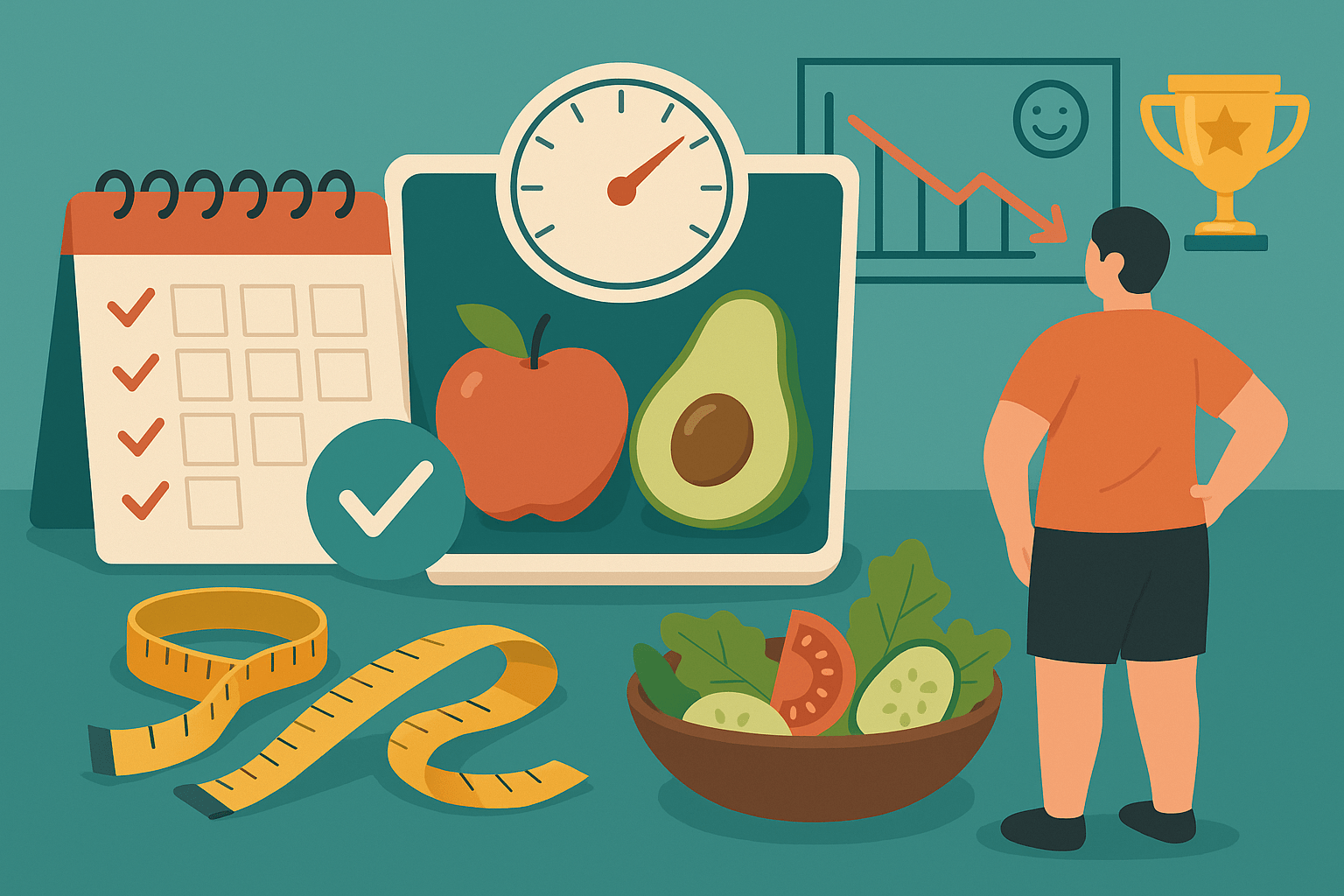
-
Set Realistic Goals: Start small. Aim to reduce a little body fat at a time instead of expecting fast results. Experts recommend losing 1–2 pounds per week. Setting short goals keeps you motivated and avoids disappointment.
-
Follow a Structured Diet for Obesity: Choose a balanced diet plan that includes whole grains, fresh fruit, and healthy foods. Limit processed foods, fried foods, and items high in saturated fats or trans fats.
As Balance Bite’s nutrition team says, “Consistency in meal choices is more important than chasing fad diets.”
-
Focus on Portion Control: Even healthy meals can lead to excess weight if eaten in large amounts. Use smaller plates, avoid second helpings, and watch your calorie intake.
You don’t always need to count calories strictly, but being aware of portions helps control weight. Portion control helps you manage body weight without feeling restricted.
-
Stay Consistent with Physical Activity: Pair your diet for obesity with daily physical activity. Walking, cycling, or even dancing helps burn calories and lowers risks of heart disease and high blood pressure.
The CDC notes that adults should aim for 150 minutes of moderate activity each week.
-
Track Your Progress: Keep a simple diet chart or use a phone app to track meals, exercise, and changes in body mass index (BMI). Tracking makes you aware of your choices and shows how far you’ve come in your weight loss journey.
-
Avoid Common Pitfalls: Skip skipping meals. Avoid “quick fixes” like a very strict diet or relying only on supplements. Such habits may slow your metabolism and harm physical and mental health.
-
Skipping meals or overeating late at night are unhealthy habits that slow progress. Instead, focus on healthy eating and steady progress.
-
Celebrate Small Wins: Every step counts. Reaching your first milestone, like dropping a few pounds or adding more vegetable intake, deserves a reward (just not with junk food). Celebrate progress with a fun activity or new workout gear.
A good diet for obesity is not about a strict diet but about building habits that last. Start small—set a target weight, use a structured meal plan, and focus on balance. Kids and adults facing childhood obesity or high body mass index need realistic steps, not quick fixes.
Choose an indian diet or a mediterranean diet rich in healthy foods, whole grains, and fresh fruit. Add a low calorie diet if needed, but avoid skipping meals. Remember, the goal is not just losing weight, but keeping a healthy bmi for life. As experts say, “Progress comes from consistency, not perfection.”




















Leave a comment
Translation missing: en.blogs.comments.discription